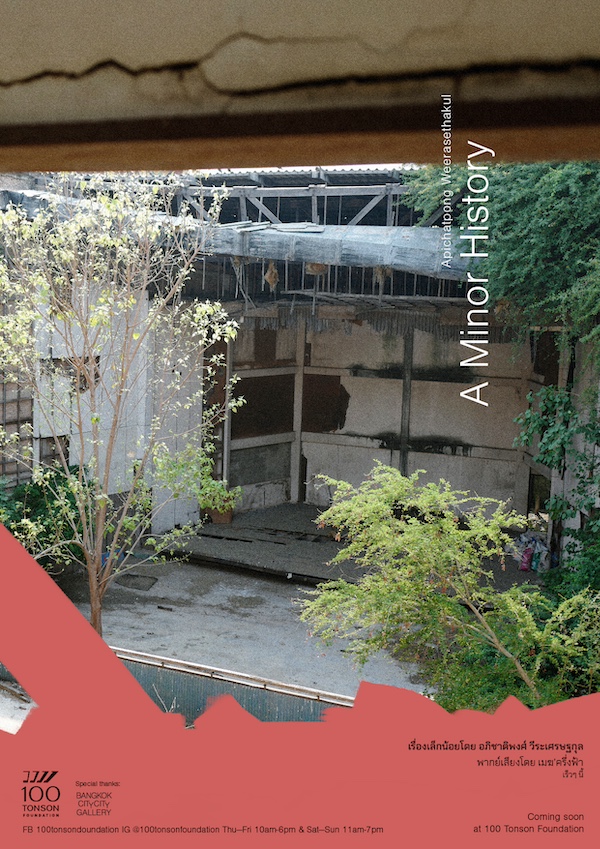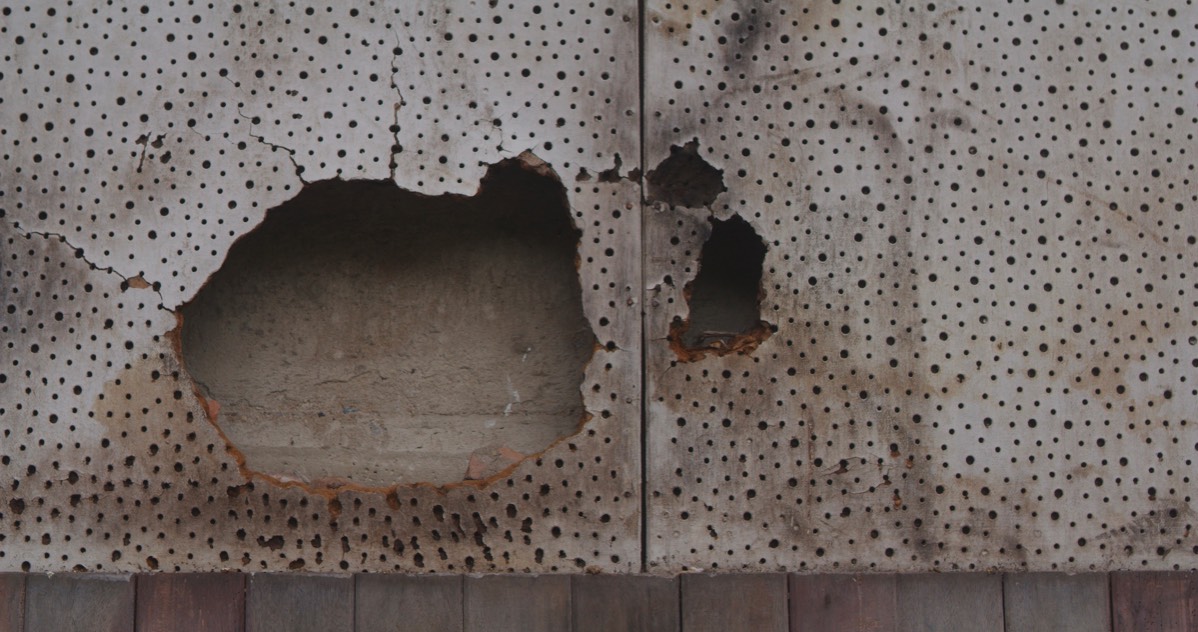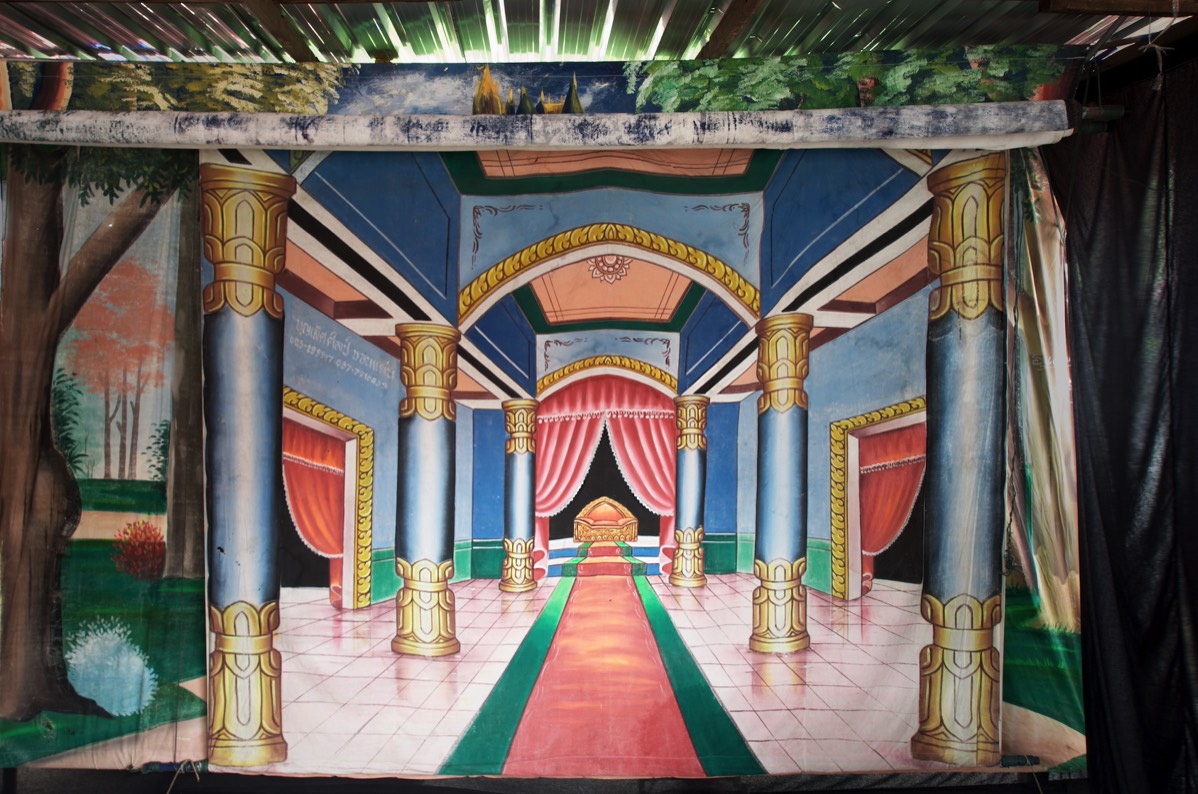A MINOR HISTORY, PART I
An Installation with 3-channel videos and photographs.
Artist: Apichatpong Weerasethakul
In collaboration with Mek Krung Fah
and Akritchalerm Kalayanamitr
Featuring Jenjira Widner Pongpas with voices by Mel Krung Fah
Curator: Manuporn Luengaram
First installed at 100 Tonson Foundation, Bangkok
Part I| 19 August 2021 – 30 January 2022

Text by Manuporn Luengaram
Curator
History is an endless conversation between the past and the present. But history as we know it is by and large mainstream history. It is made up of official national narratives about the ruling classes and events that are told to indoctrinate us with a certain set of beliefs and ideas. In A Minor History, Apichatpong Weerasethakul records a story of a distinct period in Isan - Thailand’s northeastern region – an area long socially and politically oppressed. It is the story and memory of common people, minor characters, and dissidents. It also tells of local legends and beliefs in the supernatural.
The work is the result of Apichatpong’s return to Isan during the recent pandemic lockdowns. He begins his journey in Khon Kaen where he grew up, then goes to Nong Khai, Kalasin, Nakhon Phanom, Sakon Nakhon, Mukdahan, finally reaching Ubon Ratchathani. He accumulates interviews, photographs, and various local perspectives on politics. He encounters an independent younger generation with completely different political ideas and beliefs from the previous generation. These young people are searching for their own grounds, questioning the meaning of self, happiness, and freedom. In his journey along the Mekong River, Apichatpong observes how the familiar river has been transformed as a result of the dams built in China. The Mekong River, the main artery between Thailand and Laos, is at once the victim of and witness to many layers of truth, evidenced in relics that have accumulated over time, now being excavated and examined.
The first part of the exhibition presents a three-channel video installation, inspired by Apichatpong’s encounter with a man from Mukdahan who is a member of a team that recovers corpses found floating in the Mekong River. Apichatpong also discovers an old movie theatre in Kalasin that evokes memories of the cinema of his youth in Khon Kaen that is no longer there. This source of light and stories, of Thai films’ narrative traditions and propaganda in the nation-building era that shaped individuals and society, is now nothing more than skeletal remains, infested with hundreds of pigeons. This image of dilapidation is juxtaposed with the nocturnal flow of the Mekong River. Behind lurks a Morlam (Isan folk performance) theatre backdrop that depicts an empty palace. The majestic colors are eclipsed by darkness and illuminated, at times, by the flickering films.
For the sound component, Apichatpong collaborates with Akritchalerm Kalayanamitr, who has been responsible for the sound design and mixing of all of his previous works. The echoes from the nooks and crannies of the old cinema. The flapping of the pigeon wings. The Bang! originally exploding from inside Apichatpong’s head. The bangs are reverberations of his Fever Room project and the film Memoria. They are the bangs that awaken memories from a long slumber. For this piece, Apichatpong works, for the first time, with young Isan poet Mek Krung Fah (the half-cloudy sky), who was born and raised on the banks of the Chi River. The poet composes and narrates his story, taking on the roles of a man and his lover as they stroll along the Mekong riverbank. His narration mimics the style used in the dubbing of old films and radio dramas from a bygone era.
History may be fiction. It may be made-up stories with evidence still to be uncovered. In this work, fiction and narratives about corpses that regularly float up to the river’s surface clash with mystical beliefs about the Naga, deeply rooted in the way of life and the spirit of local people on both sides of the Mekong River. The death of the Naga. The murders. The disappearance of political activists silenced for expressing their opinions, lingers like a myth. Their unforgettable stories are waiting to be disclosed, the truth being brought out into the light.


This work combines various forms of storytelling familiar to Apichatpong from his childhood: movies, dubbing and voice acting, radio dramas, and Morlam performances. The hybrid form of storytelling hovers in the realms of reality and dreams, reflecting the decay of memories and representations. For Apichatpong, this work is to record the remnants of memories. It is a farewell to and a mourning for the childhood innocence and an awakening to the unspeakable violence in Thai society.















